
Augmented reality in medical education: improving students’ training
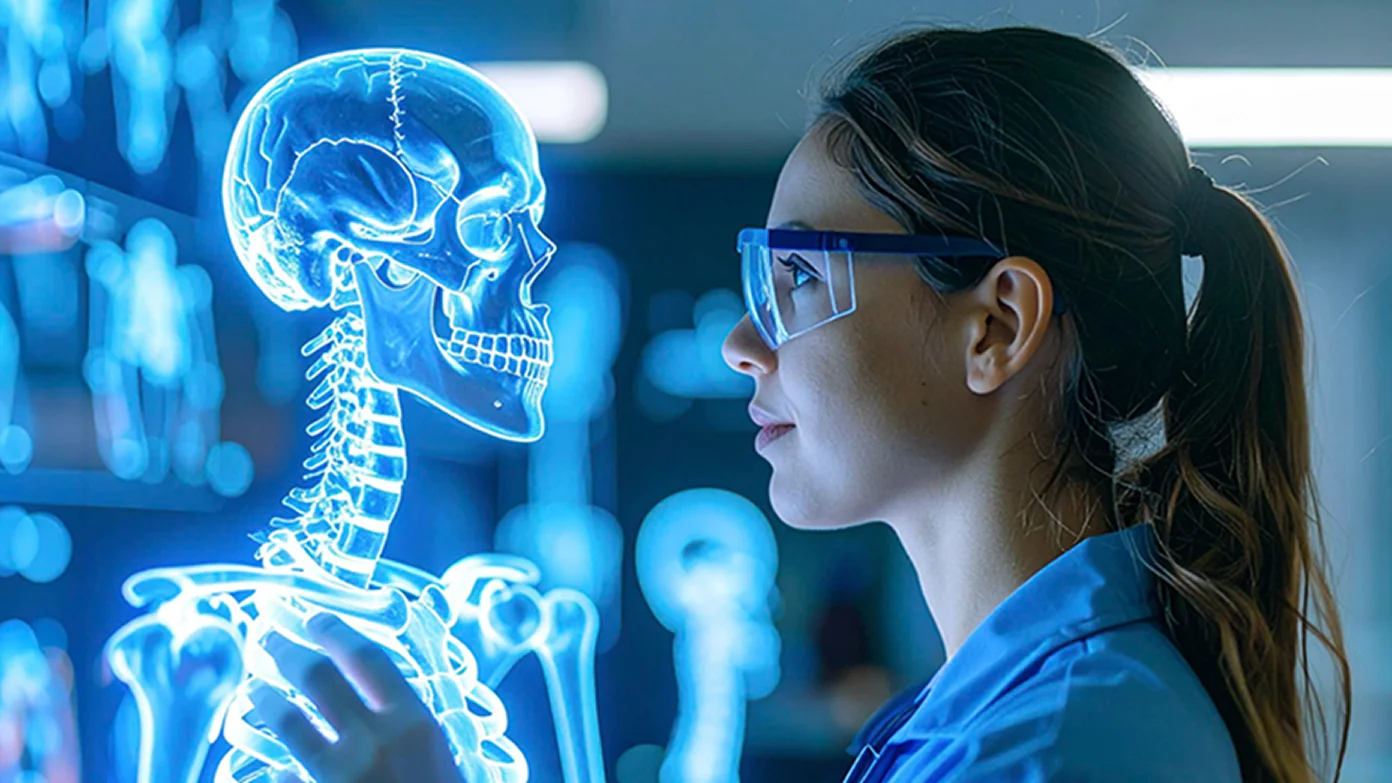
Table of contents
Education is going digital, and medical education is part of this shift. Technology brings a whole new level of convenience, interactivity, and engagement. Augmented reality (AR) is among the tools already changing the way future doctors learn. This article will explain how AR is making its way into medical education and why it’s quickly becoming essential to students’ learning journey.
What is AR in medical education?
Augmented reality is a technology that overlays digital content like 3D models, animations, and instructions onto real environments. It’s made possible by devices such as AR glasses, smartphones, and tablets. Today, many top medical schools, including Stanford and Columbia University, are already using AR in their teaching toolkit to make lessons more visually engaging for students.
AR in medical education is most often applied through two key scenarios:
Displaying hints over mannequins or real bodies
During anatomy lessons, students can wear AR glasses to see labels describing certain systems or organs projected directly onto mannequins or cadavers. This helps to connect what they’ve learned in theory to what they’re seeing and touching in practice.
Projecting 3D models and animations in study environments
Using tablets or smartphones with AR-enabled software, students can explore detailed 3D models of organs and body systems in a virtual space. While these models aren’t projected onto real objects like with AR glasses, they offer powerful tools for zooming, rotating, and studying structures from different angles.
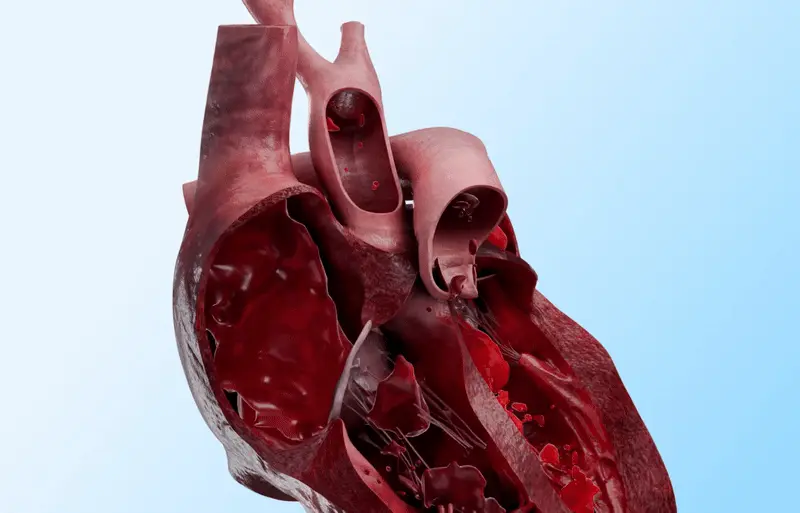
Integrating AR in the medical education journey
Augmented reality enhances medical education by adding depth, context, and interactivity across various formats and stages of training—whether in the classroom, during clinical practice, or while studying remotely.
AR in classroom learning
In classroom settings, AR is turning traditional lectures into immersive learning experiences. Instead of just watching slides, students can use tablets with anatomy apps supporting AR to explore complex topics like organ systems or disease progression in 3D. Even better, with AR glasses, they can see labeled anatomical structures projected right onto mannequins or physical models — muscles, organs, blood vessels, nerves, all layered in front of their eyes. It’s like turning the classroom into a living anatomy lab.
Case Western Reserve University has leveraged this AR-driven approach with the HoloAnatomy app, which teaches anatomy without the need for cadaver labs. Similarly, at Jagiellonian University Medical College in Poland, AR glasses are part of the toolkit in anatomy classes, giving students a more intuitive understanding of spatial relationships in the human body. These tools are especially handy for visual learners and significantly reduce the learning curve for complex medical topics.
AR in remote learning
Augmented reality in healthcare education is also powerful when it comes to remote or hybrid learning environments. With nothing more than a smartphone or tablet, students can project 3D anatomical models right onto their desk at home and manipulate them to explore every angle, layer, and detail.
Many AR platforms also support collaborative learning. For instance, students from different locations can interact with the same virtual model in real time, discussing features, comparing findings, or working through clinical scenarios together. The University of Edinburgh piloted such experiences during the pandemic, allowing medical students to explore anatomy via an AR-based learning platform. It helped students better understand the spatial relationships of pelvic anatomy by projecting interactive 3D models aligned with CT scan data. Available on phones, tablets, or AR headsets, the tool was a great help for both in-person and remote learning scenarios.
AR in advanced surgical training
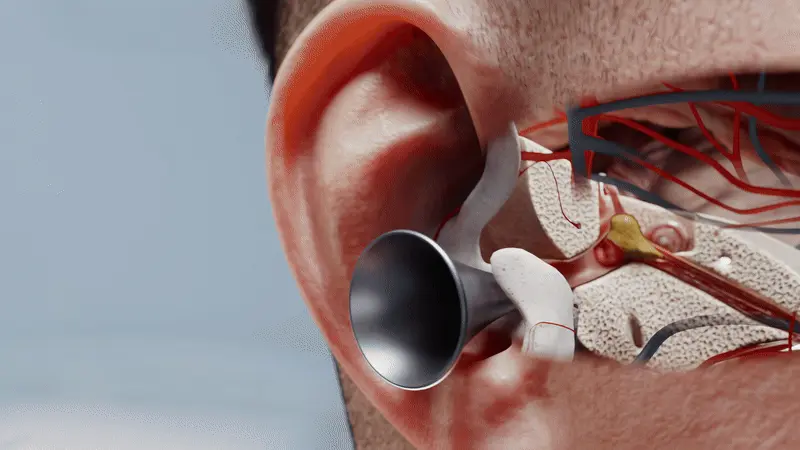
In live surgical settings, AR technology empowers experienced surgeons to master complex procedures. By overlaying critical information, such as 3D reconstructions of patient anatomy, directly onto their field of view, AR enhances precision and supports more informed decision-making. For instance, Stanford Medicine has integrated AR headsets into the operating room, allowing physicians to visualize complex anatomical structures during procedures. This integration aids in precision and decision-making, ultimately enhancing patient outcomes.
While the primary application of AR in surgery focuses on assisting surgeons, it also offers benefits for medical trainees. By participating in AR-assisted procedures, students gain exposure to advanced surgical techniques and decision-making processes in real-time. This immersive experience provides a deeper understanding of spatial relationships and procedural workflows that are challenging to convey through traditional educational methods.
Subject-specific use cases of AR in the student’s curriculum
Different medical subjects come with different learning challenges, and the use of AR in medical training helps tackle them in highly targeted ways. Let’s discuss how it supports learning in specific disciplines:
Anatomy: displaying human organs and tissues
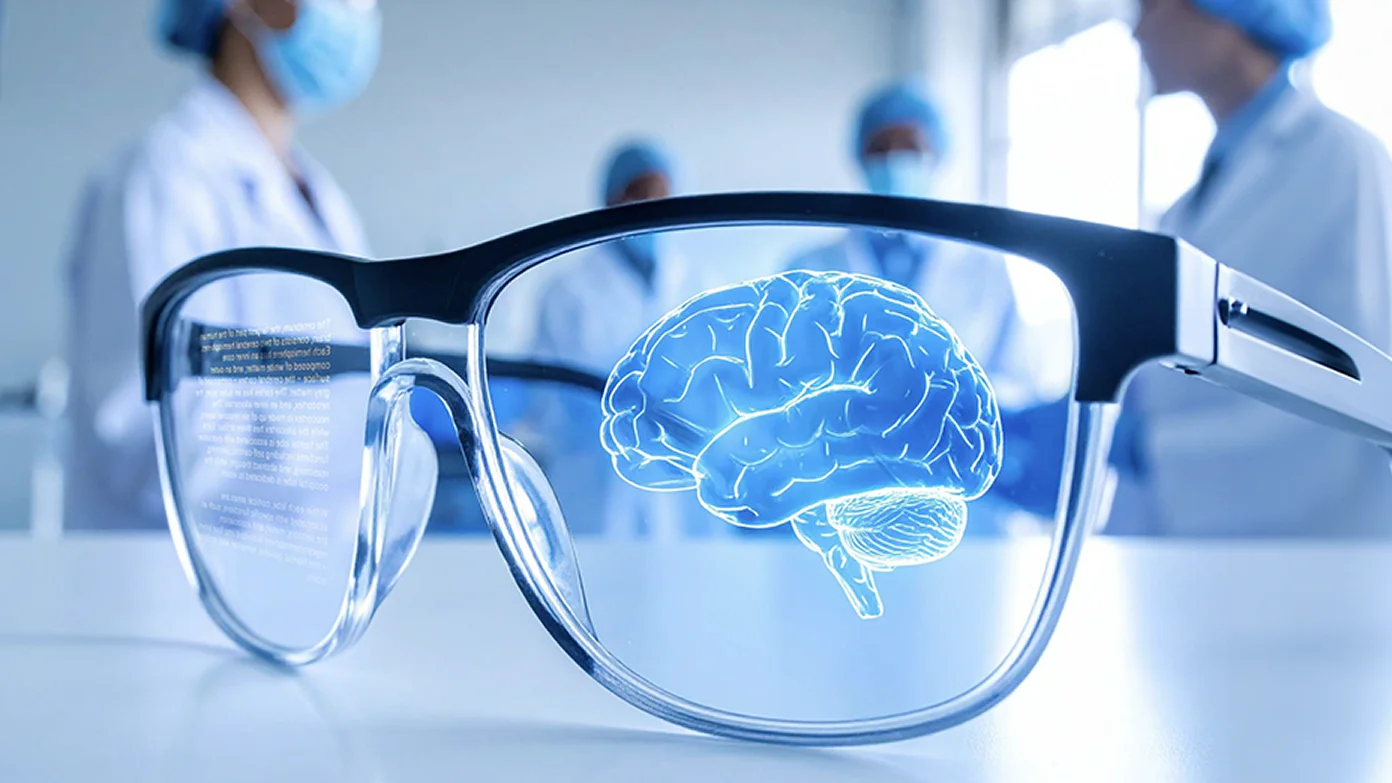
Studying anatomy is one of the most challenging aspects of medical education. It’s dense, highly visual, and often hard to grasp through 2D images. Students need to not only memorize hundreds of structures but also understand how they’re positioned and connected. The interactive nature of AR is a lifesaver here. It helps students explore organs and tissues layer by layer, rotate structures, and view them in context. Thus, students build both spatial awareness and long-term retention.
Speaking of the specific useful tools, VOKA 3D Anatomy and Pathology offers a comprehensive 3D library of anatomical models, covering regional and systemic anatomy, as well as microanatomy. With AR mode enabled, students can view medically accurate models directly on physical surfaces using smartphones or tablets.
Another example of augmented reality in anatomy education is an AR-based vein finder, Hellovein. This device projects real-time visuals over the patient’s skin to show where veins are, which improves accuracy when drawing blood. Tools like this are especially valuable during specialized courses, such as phlebotomy training, helping students build confidence and precision in essential clinical skills.
Pathology: understanding disease development
Pathology studies require visualizing the organ, tissue, and sometimes cellular changes provoked by the disease. With AR in medical education, students can explore how conditions like tumors, atherosclerosis, or organ damage develop over time in a clear visual format. Whether it's a common diagnosis or a rare case study, AR makes it easier to see the progression and connect clinical symptoms to structural changes.
VOKA makes pathology easier to grasp with its detailed 3D pathology models. Students can compare healthy and diseased organs side by side, zoom in to explore damaged areas, and watch how illnesses progress in interactive AR mode. This level of visual clarity gives future doctors a safe space to study complex or uncommon cases they might encounter in real-world clinical practice.
Physiology: visualizing dynamic processes & procedures
Physiology is all about movement: blood pumping, lungs expanding, neurons firing. And let’s face it, those dynamic processes are tricky to understand through still images. That’s where AR really shines, as it gets students “inside” the process. They can watch 3D animations in augmented reality that bring organs and systems to life, seeing how everything works together in real time. Instead of imagining how the body works, AR shows it right in front of their eyes.
But AR doesn’t stop at just showing how the human body works. It also lets students practice. A great example is the AR defibrillator, which places students in a realistic cardiac arrest scenario where they practice hand placement, deliver a simulated shock, and watch how the heart’s rhythm responds to each step. It’s a hands-on way to build confidence when interacting with physiological processes in high-pressure situations.
Pharmacology: mechanism of action made visible
In pharmacology, it’s crucial for students to understand how drugs travel through the body, interact with cells, and produce specific effects at the microscopic level. For that purpose, students can leverage VOKA’s dedicated microanatomy section to dive into the world of cells with AR. When studying topics at the macroscopic level, being able to zoom in and explore more detailed 3D structures (like tissues or individual components) helps deepen understanding, especially in areas like pharmacology where precision matters.
Students can also take it a step further by watching the mechanism of action (MoA) animations through AR glasses. These immersive visuals show exactly how molecules bind to receptors, how ion channels open, or how enzymes are inhibited. Apart from being a powerful visualization aid, such 3D medical animations also help future doctors communicate drug mechanisms more clearly to patients and colleagues.
Benefits of AR for medical students

Augmented reality isn’t just flashy tech; it solves real challenges students face. Here are just a few ways AR in medical education gives students an edge in their studies:
Interactive exploration with better visibility
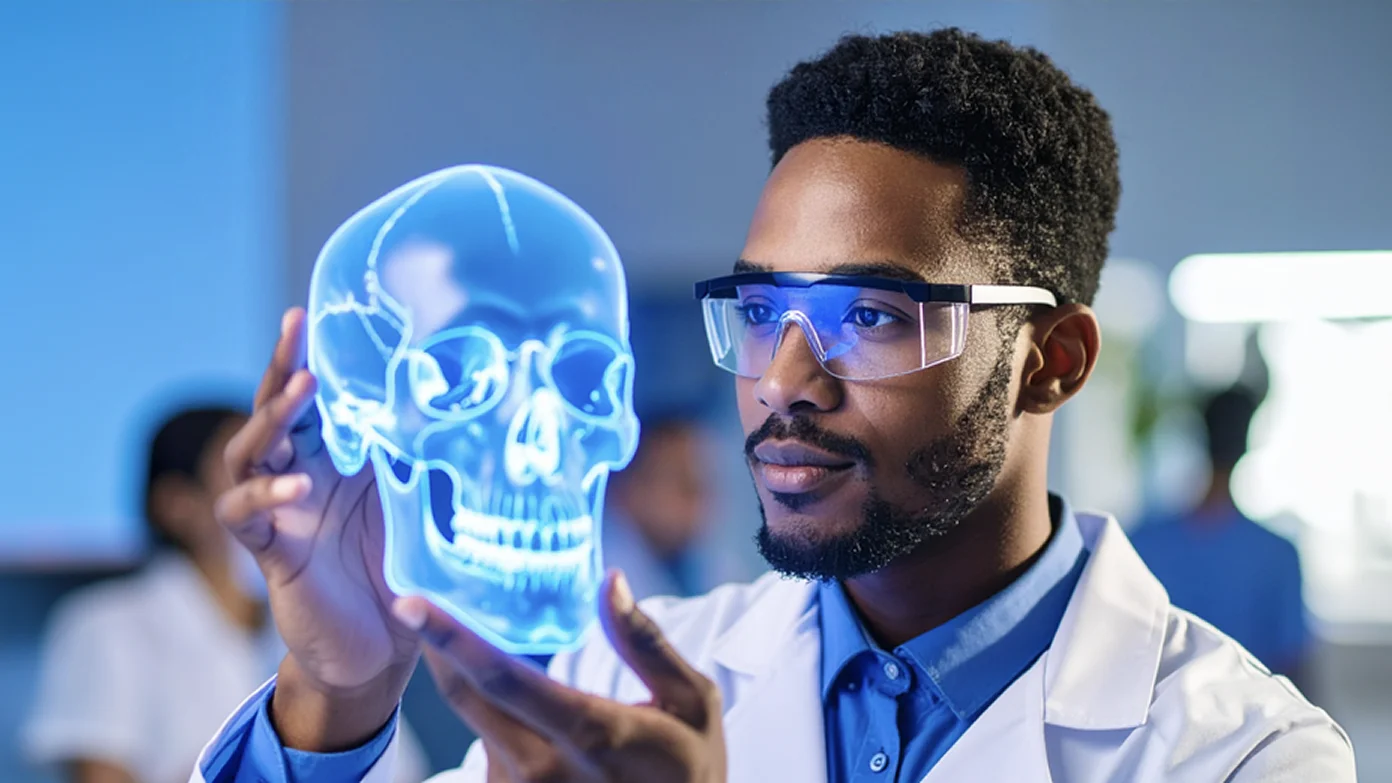
One of the most significant advantages of augmented reality for medical training is the ability to visualize complex structures in a hands-on way. This kind of visual clarity is a huge upgrade from static images in textbooks or 2D screens. It helps students build spatial awareness, which is crucial for subjects like anatomy and pathology, where understanding the physical relationships between structures is essential.
Improved knowledge retention
We all learn better when we can see and interact with what we’re studying. Studies show that immersive, visual learning methods, like those offered by AR, significantly boost retention compared to traditional lecture-based or reading-heavy approaches. That’s because AR turns passive studying into active engagement.
Boosted confidence in clinical decision-making
By providing real-time visual cues and contextual information, AR helps students make more informed choices during practical exercises. Seeing relevant anatomical data, step-by-step guidance, or diagnostic hints right in their field of view reinforces correct reasoning and reduces hesitation. Over time, this repeated support strengthens students’ clinical judgment and builds confidence in applying knowledge under pressure.
Wrapping up on AR in medical education
Augmented reality has become a practical, proven way that helps medical students learn. As more universities adopt AR, it’s quickly becoming a core part of modern medical education. For students, that means better understanding, greater confidence, and a smoother transition from the classroom to the clinic. The future of medical training is immersive, and it’s already here.
FAQ
1. What is augmented reality in medical education?
Augmented reality in medical education is the use of AR technology to overlay digital 3D models, animations, and labels onto real-world environments. With AR glasses, tablets, or smartphones, medical students can explore anatomy, physiology, pathology, and even pharmacology in an interactive and immersive way.
2. How does augmented reality improve medical training?
Augmented reality for medical training enhances student learning by making anatomy and physiology more interactive, allowing learners to visualize structures in 3D, and practice clinical skills in safe, simulated environments.
3. What are the benefits of using AR in healthcare education?
The benefits include better visualization of complex structures, improved knowledge retention, enhanced confidence in clinical decision-making, and more engaging training sessions.
4. Is augmented reality the future of medical education?
Yes, AR in medical education is rapidly becoming a core learning tool. Universities and hospitals are adopting AR for anatomy classes, remote learning, and surgical training. As the technology develops, it’s expected to play an even bigger role in preparing future healthcare professionals.
Table of contents
Thank you for your comment!
Your comment has been submitted for moderation and will be published soon. We'll email you once it’s live.